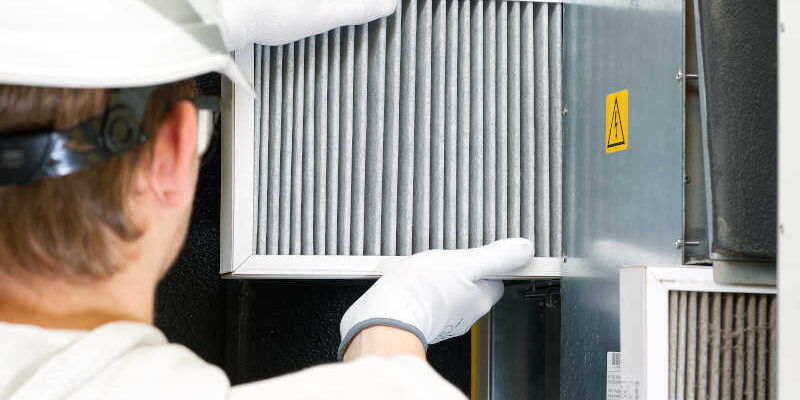Your home’s HVAC system depends on it working properly. It won’t stay forever because it operates all year long, sometimes day and night. In actuality, this ranges from 12 to 15 years. Because of this, you must take all necessary steps to guarantee that it runs as long as possible and ultimately helps you save money.
Regularly replacing the air filter in your HVAC system is one way to increase its lifespan. You can complete it yourself, and it’s easy and affordable. Continue reading to learn more.
Mechanics of HVAC Filters
Air filters employ either pleated paper or fiberglass to remove particulates from the air entering your home’s HVAC system. They can filter out a wide range of airborne particles, including fur, pollen, mildew, lint, and dust, depending on how much filtering is built into the device.
Particles in the air are retained as it goes through and will eventually fill the filter, decreasing airflow into the system. Preventing this from happening by changing the filter is the greatest method to support your HVAC system.
What It Can Do for Your HVAC System
Your system will operate more effectively and for a longer period of time if the air entering it is clean. It stops excess dirt and debris from harming internal components and machinery. Effective filtration not only offers the advantages listed above, but it also reduces airborne toxins in your home, resulting in healthier breathing conditions.
Why Ignoring Filter Changes Can Lead to Serious Issues
When used as intended to purify the air, air filters work brilliantly. The airflow will be impacted as a filthy filter starts to occupy all available area. Your home’s HVAC system will have to work more to heat or cool the house with less air flowing through. The system will experience more wear and tear, your utility bills will go up, dust will accumulate in your ducts, and the system will stop cleaning airborne particles.
Although it’s hard to imagine that one simple air filter may result in a string of issues, it’s a quick fix that you shouldn’t put off performing.
How to Calculate the Filter Size
Sizes of HVAC filters vary greatly. The sizes are fortunately listed on your unit’s manual. It will establish the size of filter that you require. The quantity of filtration offered, as determined by the MERV rating, is the other factor to take into account. This will fall between 1 and 16, with 1 representing the lowest level of filtration and 16 the highest.
When and How to Change a Filter
When there is considerable usage, such as in the summer and winter, Energy Star advises checking your filter every month. When you inspect it, if it appears dirty, change it right away. Slide out the old filter after turning off your HVAC system. Verify which direction the arrow on the filter frame is pointing. This denotes the airflow’s direction. The new filter should be placed in the same orientation. You’re done once you’ve installed the new filter and secured any clips or grills.
Contact an expert at Elite Climate Control if you require assistance.
Conclusion
You may add this straightforward activity to your monthly schedule and make it simpler by purchasing replacement filters in bulk. You’ll be ensuring that your HVAC system operates at its best, lasts longer, and circulates clean air throughout your house.




